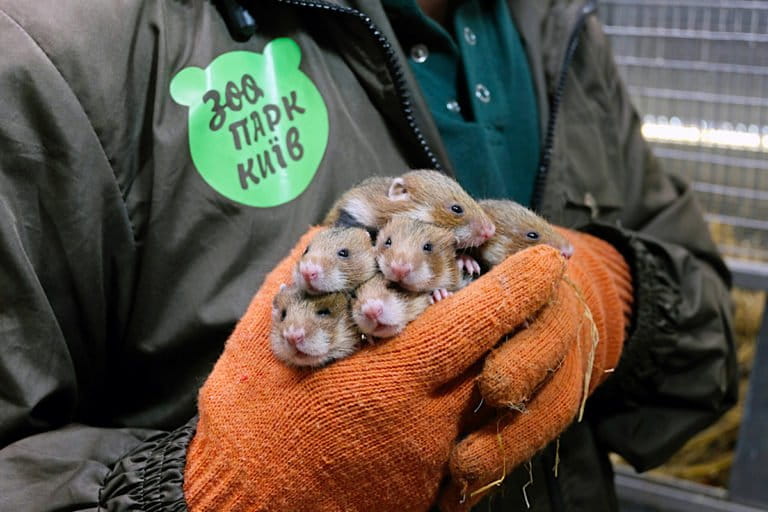Seven years ago, Redonda, a volcanic island in the Caribbean Sea, resembled the moon's surface: a dusty, debris-covered, barren terrain. The island, which is part of Antigua and Barbuda, had…
If humans went extinct tomorrow, who would rule the world? Beavers. Well, at least in the Northern Hemisphere. These tree-felling, water-slowing, wetland-creating rodent engineers have a massive impact wherever they…
CAPE TOWN — Evidence of mice attacking albatross chicks on Marion Island, midway between South Africa and Antarctica, makes for grim viewing. One video, captured at a colony of endangered…
Before Ukrainian biologist Mikhail Rusin can grab his shovel and venture afield, he first needs to ask locals if there are land mines nearby in one of the few areas…
KATHMANDU — If you were a grumpy cat, you’d probably want to avoid company. And if you were the world’s grumpiest, as David Attenborough once described the elusive manul, what…
Damselfish can be fastidious farmers. They prune and cultivate small patches of algae, often no more than half a square meter (5 square feet) in area, ensuring they have a…
The black-and-white motion-triggered video looks like an outtake from a cheap horror movie: A handful of rats circle a smooth, platter-sized mound of sand. Suddenly a sea turtle hatchling appears,…
Rodents gnawing on oil palm crops can be a costly business. One study estimated that they can reduce yields by as much as 10%. Among the means used to tackle…
“Wild rats are as different to laboratory rats, as probably a wolf is to a Chihuahua. That’s not an embellished analogy … The biggest misconception, I think, is that we…
Think of a mammal that’s at risk of extinction. What comes to mind? A charismatic tiger, perhaps? Or a grand herd of majestic elephants? What about the Mount Lefo brush-furred…
Rodents live among us, but we rarely see them. Nondescript, tiny, and often nocturnal, they slip through the cracks of society, largely unnoticed. However, the COVID-19 pandemic has brought the…
The COVID-19 pandemic brought zoonotic diseases into the global spotlight in a way nothing has done for a century, even though zoonoses — diseases passed between humans and animals —…
MANILA — The eruption of Mount Pinatubo in the Philippines in 1991 spewed enough volcanic ash into the atmosphere to cool the world. In the immediate vicinity of the volcano,…
The naked mole-rat (Heterocephalus glaber), a hairless rodent that lives in the arid areas of eastern Africa, is one of the strangest-looking creatures in the animal kingdom. But what it…
Today we speak with Dawn Biehler, an associate professor at the University of Maryland, Baltimore County, whose research focuses on the history and public health impacts of rats and other…
A student-led research team from three California universities has shown that desert kangaroo rats frequently avoid predation by rattlesnakes through a combination of speedy reaction times, powerful near-vertical leaps, and…
Wearing nothing more than leaves hanging from belts of woven vegetation, the three scientists stand in the rain with little idea of what to expect. They’ve lived and worked with…
We discuss one of the world’s most overlooked keystone species, the beaver, on this episode of the Mongabay Newscast. Listen here: Most of us might not think of beavers as…
Plant numbers have surged in a group of islands in the Pacific Ocean following the eradication of invasive rats that gobbled up seeds and gnawed away at vegetation, a new…
TOULOUSE, France -- Rats exact a punishing toll on island seabird colonies, decimating their numbers as they eat the birds’ eggs and young. Research has shown that fewer birds, and…
Evolution takes time and space. Enough time needs to pass for genetic differences to crop up in a population of animals and make them distinct from their forebears. And enough…
Ejidos are part of a land tenure system in Mexico by which land is communally managed by local villages. Many ejidos, such as Ejido Caoba in the state of Quintana…
Though the approximately 465,000 islands on planet Earth represent just over five percent of total global land area, they are disproportionately rich in threatened biodiversity — and researchers have now…
There’s still so much we don’t know about life on planet Earth that scientists discover new species with whom we share this planet nearly every day. For instance, this year…
For a long time, people living on the Vangunu Island in the Solomons spoke about the "vika", a giant rat on the island that lives in trees and cracks open…
In 2012, Dr. Milada Rehakova’s research brought her back to Dinagat Island, Philippines. It was her second expedition to the island in pursuit of insights on the tarsier, but she…
Deforestation and forest degradation are typically considered to be the most significant threats to tropical biodiversity, but a new study finds that hunting is “by far” the most severe immediate…
In May 2011, two volunteer researchers had an unexpected visitor at the El Dorado Nature Reserve Ecotourism lodge in northwestern Colombia. A rare, tiny rodent called the Santa Marta Toro or the Santa Marta…
A team of researchers has concluded that, in addition to being the Philippines’ largest and most populous island, Luzon Island is also home to the greatest concentration of unique species…
Researchers in Australia say they’ve discovered the first mammal to go extinct due to human-induced climate change: the Bramble Cay melomys, also known as the Bramble Cay Mosaic-tailed rat, a…


































































